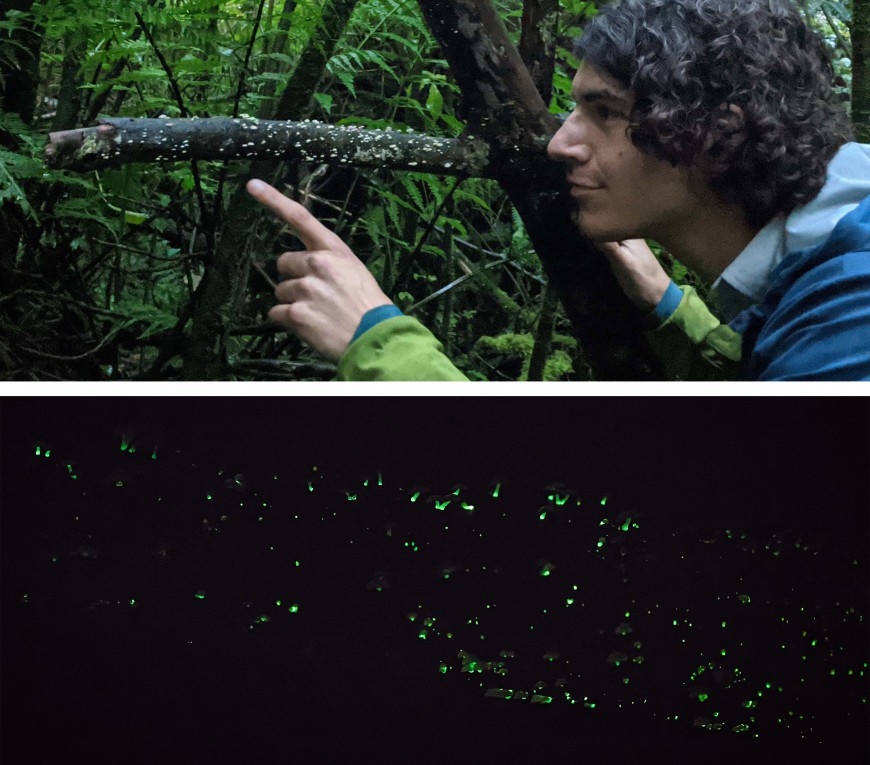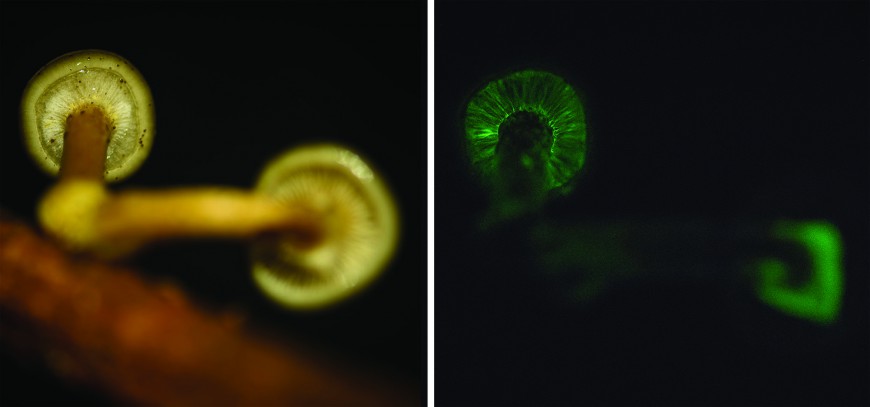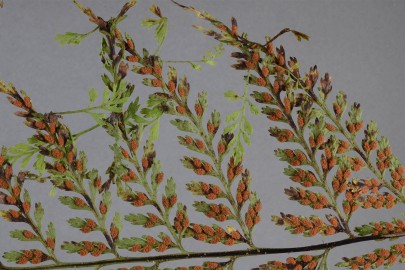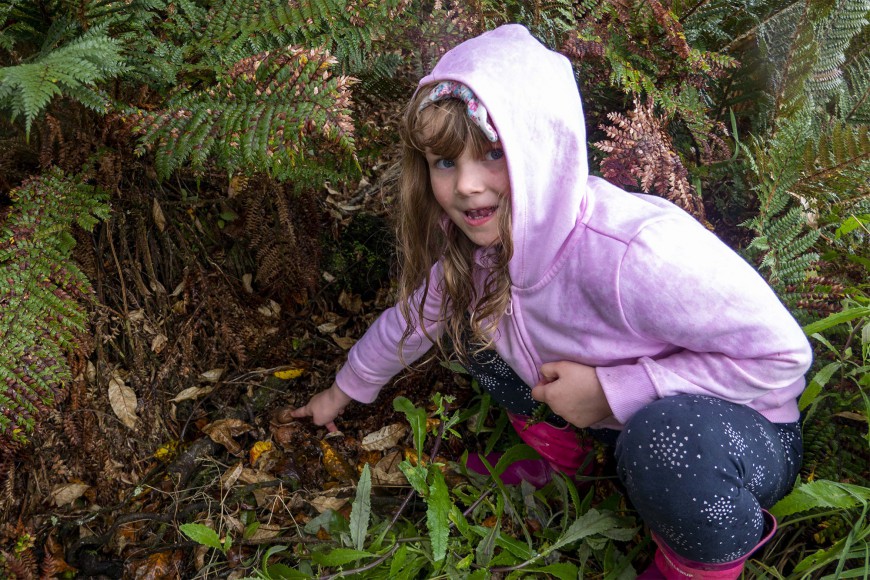A late-night photo of a group of Mycena roseoflava taken by Manaaki Whenua and University of Canterbury mycology PhD student David Hera records the first time the bioluminescence of this native New Zealand species has been captured on camera.
Mycena roseoflava was one of two species collected, the other being Armillaria novae-zelandiae, of wood-inhabiting fungi that ‘glow-in-the dark’ thanks to light-emitting compounds called luciferins. It’s the same enzyme that gives fireflies and some marine organisms the ability to light up. It is not understood why these fungi have evolved to be luminescent at certain stages of their life cycle.

Tree branch laden with Mycena roseoflava by day and by night
Since it was first described as a species about 60 years ago, Mycena roseoflava was not known to be bioluminescent until now. It is, however, very likely that Māori have previously observed their glow.
David also captured an image of the bioluminescent veil of the native to New Zealand Armillaria novae-zelandiae. This is only the second known photograph of this species in its bioluminescent state. Known as harore in Te Reo or honey mushroom in English, mushrooms of Armillaria novae-zelandiae develop mainly in winter on dead trees, which the species helps to decompose, returning nutrients to the soil.
"Taking photos of these fungi at night is a challenge similar to deep sky astrophotography,” says David. “In order to get a clear picture, it requires multiple long exposures of 8+ minutes at very high ISO (camera sensitivity) settings and some intensive post-processing. An additional hurdle when taking these in the forest at night on cold evenings is condensation on the camera lens, which makes for very blurry, fogged up photos.”

Armillaria novae zelandiae during day and night. Image: David Hera
Another exciting find was a new native species of rust fungus by Manaaki Whenua research associate Eric McKenzie. Rust fungi are microscopic parasites of plants. Most species are of little economic importance but others, such as the cereal rusts, cause huge economic losses worldwide. Currently, the invasive myrtle rust is a serious threat to New Zealand’s myrtle plants. Approximately 300 species of rust fungi are known in New Zealand. About half of them are native and found almost exclusively on native plants while the other half are introduced and found mainly on introduced plants.

A previously unrecorded fungi/parasite are white spots that are very hard to see on this hen and chickens fern and discovered by Eric McKenzie
“This species is a native parasite on the hen and chickens fern, pikopiko, mouku or mauku (Asplenium bulbiferum),” says Eric. “This rust will be described, illustrated and published as a new species.”
Since it started in 1986, the New Zealand Fungal Foray has been held annually during autumn at different sites around the country. Around 40 professional and amateur mycologists attended this year’s event on Rakiura.
Foray organiser Renee Johansen says the event offers a great chance for enthusiasts and professional mycologists from around the country to gather to work on research projects and collectively advance the knowledge of fungi in New Zealand, many species of which remain unknown. “And there was an extra buzz in the air this time, as Stewart Island presented brand new territory to explore.”
Each day’s foraying involved collecting specimens in the field and then heading back to Foray Headquarters (this year the Stewart Island Community Hall) where the specimens were identified, labelled and displayed. The fungi were then photographed, with some dried and packed up to be added to the national fungal collection, the New Zealand Fungarium (PDD) Te Kohinga Hekaheka o Aotearoa in Auckland. Researchers also dissected specimens, prepared material for DNA extraction and generated cultures from species of interest, including Cordyceps, a group of parasitic fungi that grow on insects.
PDD Curator Mahajabeen Padamsee says the Manaaki Whenua team brought back more than 200 specimens from Rakiura for the national collection.
This year’s Fungal Foray ended on a high note with the find of an Earthstar (Geastrum sp.) by budding mycologist and Rakiura resident 5-year-old Esjay Jenkinson.

